What is Phishing?
What is phishing, you say? Phishing is when malicious actors impersonate others to steal sensitive information from other people using malicious links. They use delivery methods and platforms such as emails, text messages, and social media. The primary method they use is by sending emails to other users, and in these emails, there are malicious links. They cast out bait and hope that someones take a bite, and that bite could be you! That’s why it’s called phishing because it’s basically fishing in the digital world!
These links are usually hidden in buttons or other places where you don’t expect them. These links lead to malicious websites that collect your information, such as usernames and passwords. The attackers are then able to use these credentials to log into systems that you may have access to or accounts that you use. Now you have a compromised account, and your information is at risk! It’s a huge headache to clean up.

Why is this Important?
Bad actors use phishing as a means of getting access to systems and getting a hold of confidential information. A user can send out 1,000 malicious emails, and 999 people could spot it, but it takes only 1 person to make a mistake. Those mistakes can be costly and cause great harm, and sometimes you don’t even know that the link you clicked was malicious. Your credit card, social security, bank account information, and other information can be accessed just because you clicked a link! It’s a big deal, and it greatly emphasises why you should pay attention when you’re surfing the internet.
Social What?
Another topic that goes hand in hand with phishing is social engineering. Social engineering is a method of social hacking that includes manipulating individuals in order for them to do something that one desires without them being aware. Examples of this include convincing someone to reveal confidential information, convincing them to change a password, or creating a sense of urgency that forces a person to act on their emotions. It also consists of gaining a person’s trust and taking advantage of that trust so that they perform a task for you. It’s one of the main tools in a hacker’s tool belt, and it’s very effective.
The Tools of the Trade
I’m going to list many free tools that one can use in their investigation. I use them myself, and they’ve been a blessing so far. They serve various purposes and all get the job done efficiently.
Also, these tools are a part of OSINT (open source intelligence). OSINT is the gathering and analysis of public information and gaining intelligence out of it. It’s a huge blessing because it’s not locked behind a paywall, and you can do it straight from your home.
1) The tool I’d like to shout out is VirusTotal. It’s a free tool that allows you to scan a URL or file, and it’ll report back whether it’s malicious or not. It scans the said file or URL with security vendors and the community, and you get a response when it’s done.
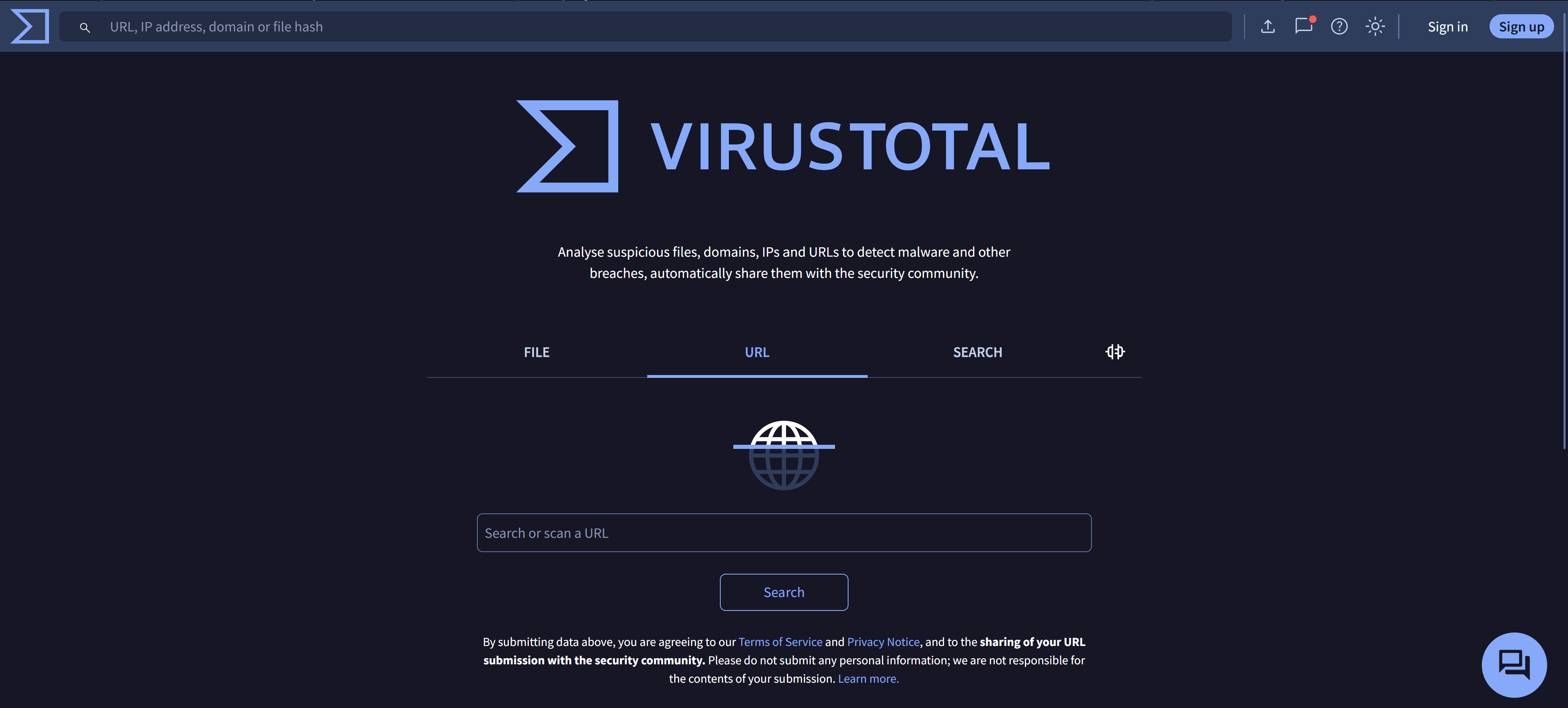
2) DNSlytics is a tool that can be used to bring up the IP, domain, and provider for a website. It’s very powerful, and the best part is that it’s free!

3) Urlscan is a tool that scans a URL and provides you with information about it, and lists whether it’s malicious or not. It also allows you to preview what it looks like and provides a snapshot in real time, so you don’t have to head to the malicious link yourself.

4) MHA, or message header analyzer, is a tool that analyzes header input for you. It provides a deep dive and gives you output on it. It’s a bit much if you don’t know what you’re looking for, but it’s really in-depth.

What’s the Plan Today?
Today, we’re going to be analyzing a phishing email that had malicious intent. We’re going to be looking at the sender, titles, email structure, and how to check if the link or payload in the email is malicious. Hopefully, this will equip you to spot these pesky emails and keep you and others safe from these bad actors.

The Scene of the Crime
I present to you in all of its infamous glory, a phishing email. I dug it up in my spam folder, and it’s looking pretty bad from over here. Someone needs to take out the trash! Yet before we continue to insult the email and its sender, we’re going to have to analyze it to make sure that it’s actually a phishing email.
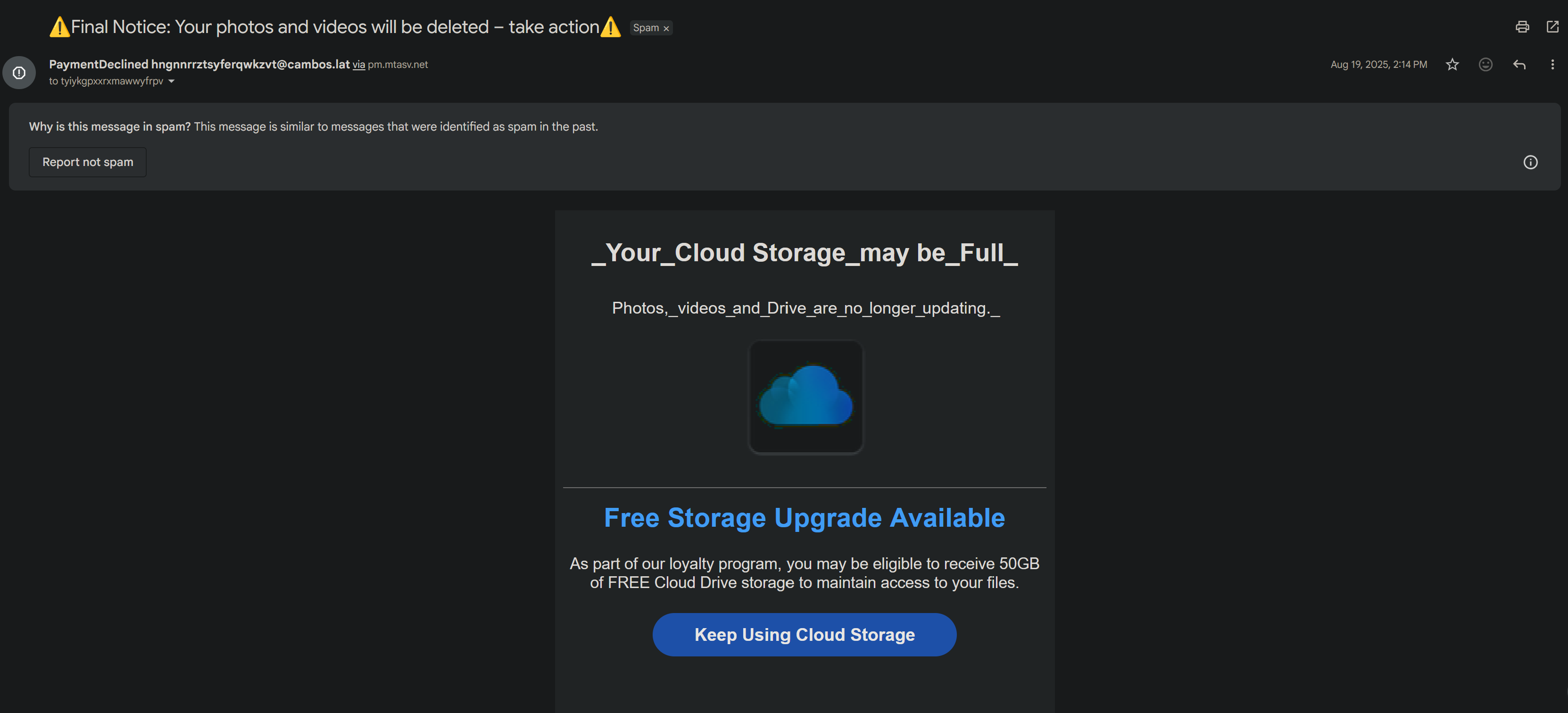
Let’s Start Unpacking
I’m going to list a series of steps that I use in analyzing this email, and hopefully, you can create a similar method in order to perform your own analysis.
1) Title: “Final Notice: Your photos and videos will be deleted – take action”
The title states that it’s a final notice and that if you don’t act, your photos and videos will be deleted with a few warning emojis as a cherry on top. This sense of urgency creates a sense of fear and manipulates you into acting because you’re worried that your content will be deleted. This is a case of social engineering and is a method used by hackers in order to manipulate you into performing an action, which in this case is clicking their link. A few questions to ask yourself are, “Is it too good to be true?” and “What are they trying to get me to do?”. There’s always a catch and purpose to these emails. Once you spot these patterns, it’s easy to put it all together.

2) Sender: hngnnrrztsyferqwkzvt
The next thing that we’re going to look at is the sender. Questions such as “Does this look like a legitimate sender?” should come to mind. Normally, we’d run it through the email domain through URLscan or DNSlytics, but in this case, we’re going to observe and gauge it by eye. It looks to be an abnormally long sender address with a “net” top-level domain and also a “lat” domain, which is based in Latin America. Something smells phishy over here! It doesn’t add up because it’s not like a normal domain, such as Google or Yahoo. It seems that they’re not English speakers either, and this isn’t a US or English native domain.

3) Text: Your Cloud Storage may be Full Photos videos and Drive are no longer updating
The text in the email is the biggest giveaway. There are underscores between every word, and random words are capitalized. It isn’t a professional format at all and is a dead giveaway because most professional vendors would spell it out properly and have proper grammar.
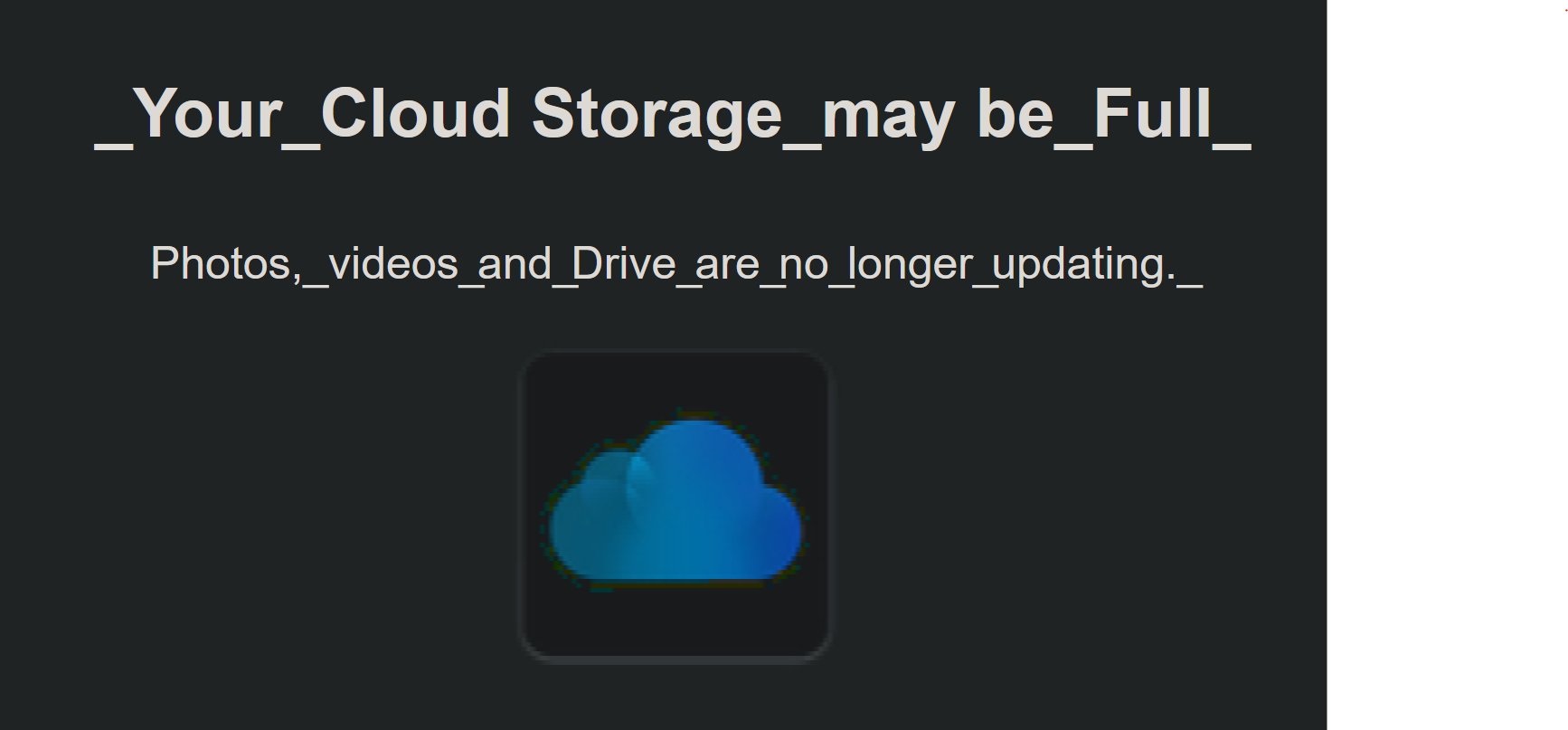
4) Text: As part of our loyalty program, you may be eligible to receive 50GB of FREE Cloud Storage to maintain access to your files
The text here is the bait that’s thrown your way. Initially, they stated that your videos and photos would be deleted. Now, they offer you a chance to get free cloud storage in order to store your content on it. It’s social engineering, which is manipulating you to hopefully persuade you to click their link because you’re getting a great deal, and they’re solving your problems.
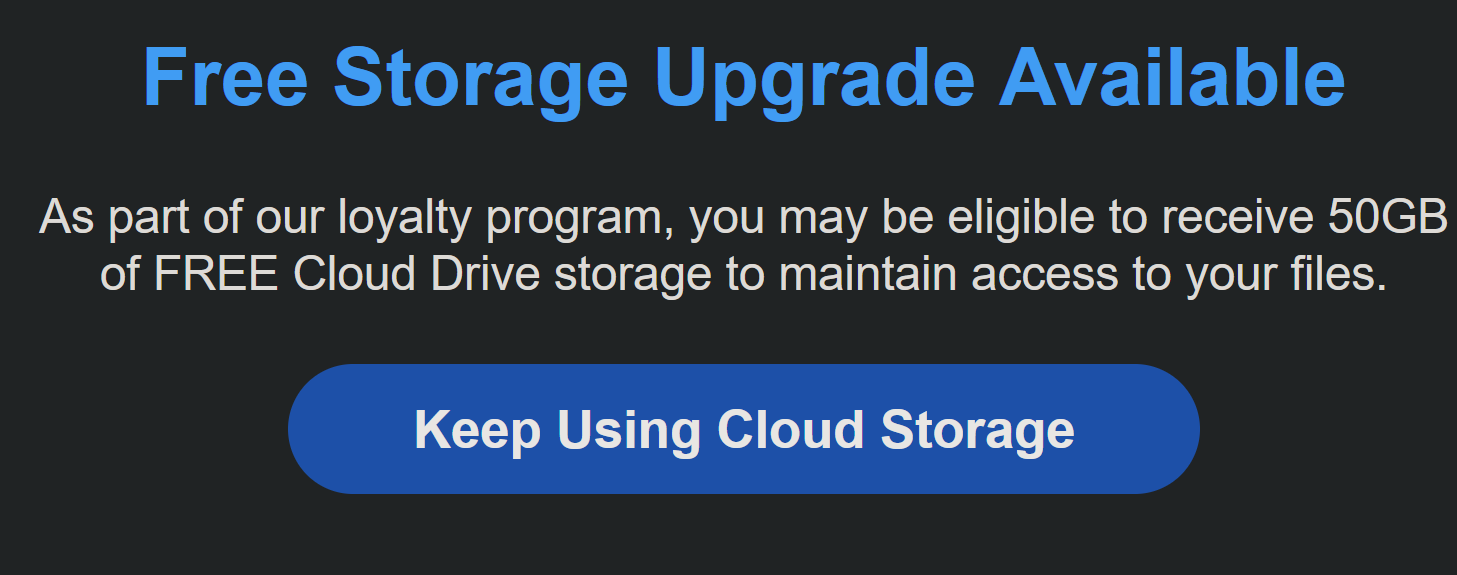
5) The Button: Keep Using Cloud Storage
The big blue button that’s tempting you to press it is where the payload is hiding. The phishing link is embedded in it, and the “Keep Using Cloud Storage” is a call to action, which is meant to convince you to click on it. Alarm bells should be ringing through your head right now. Do not click that button.
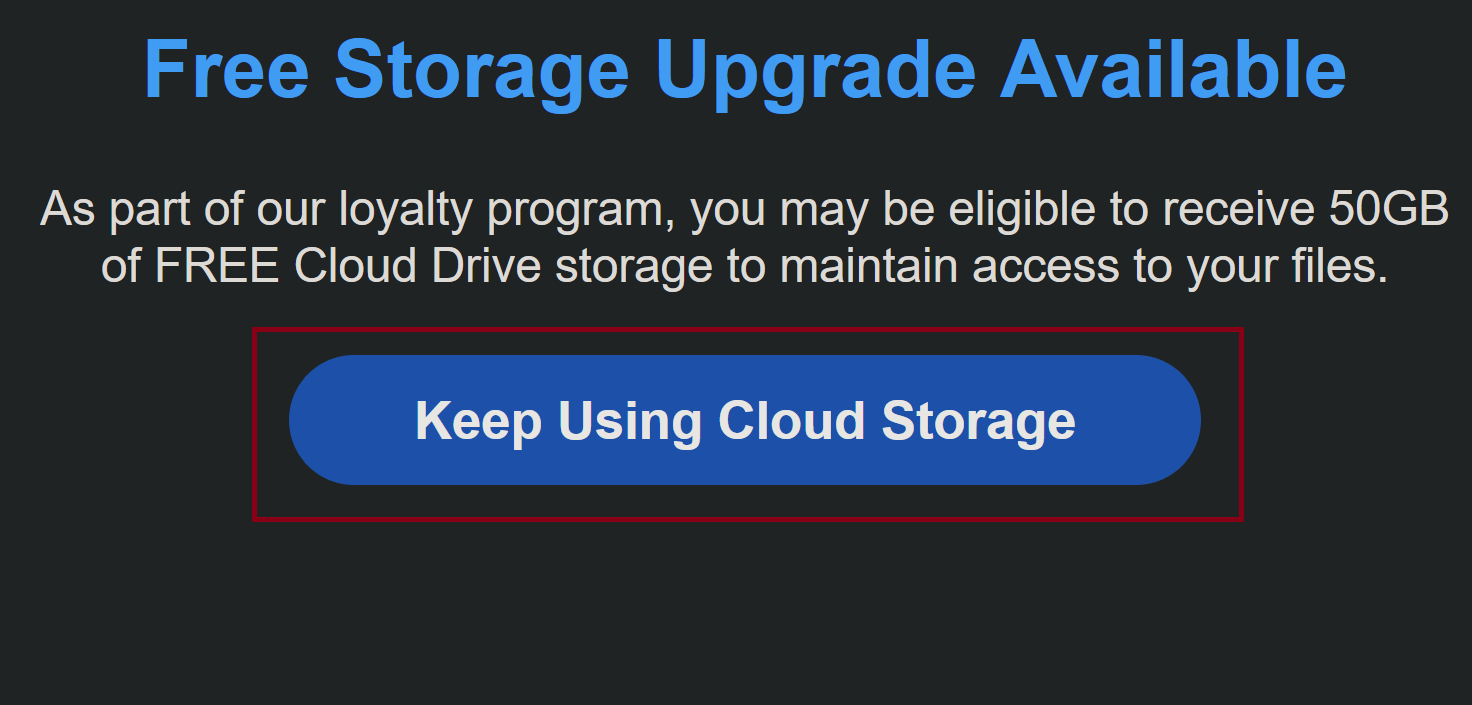
6) Deletion: Termination commencing…
The next step involves deleting the email and getting rid of it. No longer will it stain your email or stink up the place. You have now accomplished your mission and analyzed a phishing email. The best solution for these phishing emails is to either delete them or, if you’re in a corporate environment, report them to your security team that’s in charge of dealing with said emails.
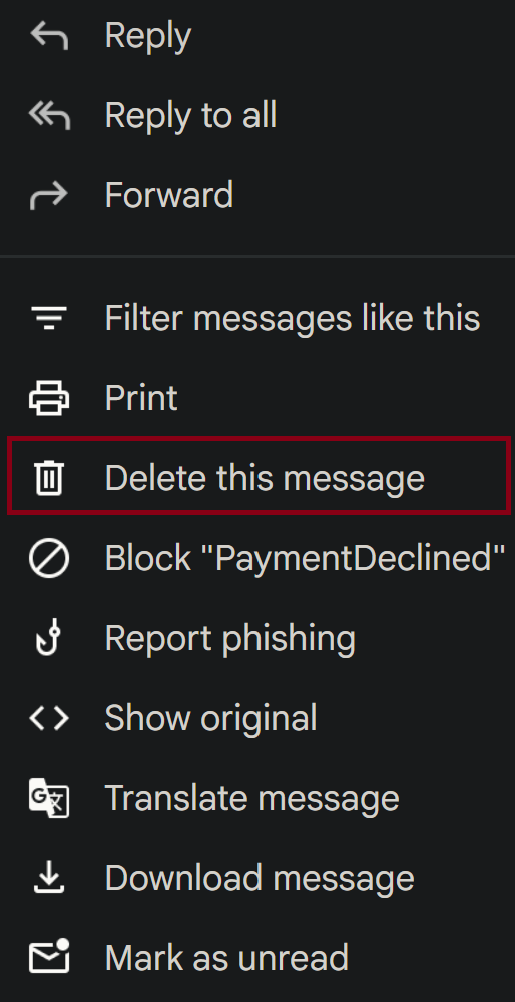
It is Finished
It’s done! You now have been equipped with how to analyze these phishing emails on a fundamental level! Keep learning, and those bad actors will stand no chance.
There are many other tools that can be used, and I have only scratched the surface here. Also, there are many advanced techniques that one can use to dive even further for investigations, such as sandboxing, checking the URL, and using tools such as Splunk and Defender to find out where it came from. I could list a more thorough method, but I hope this helped educate you on how to identify phishing emails on a basic level.
There are many more sophisticated phishing emails that have proper spelling, grammar, company logos, and spoofed domains, but luckily, we got to check out a messy one today! Thank you for keeping up with me, and until next time! Happy hunting!
